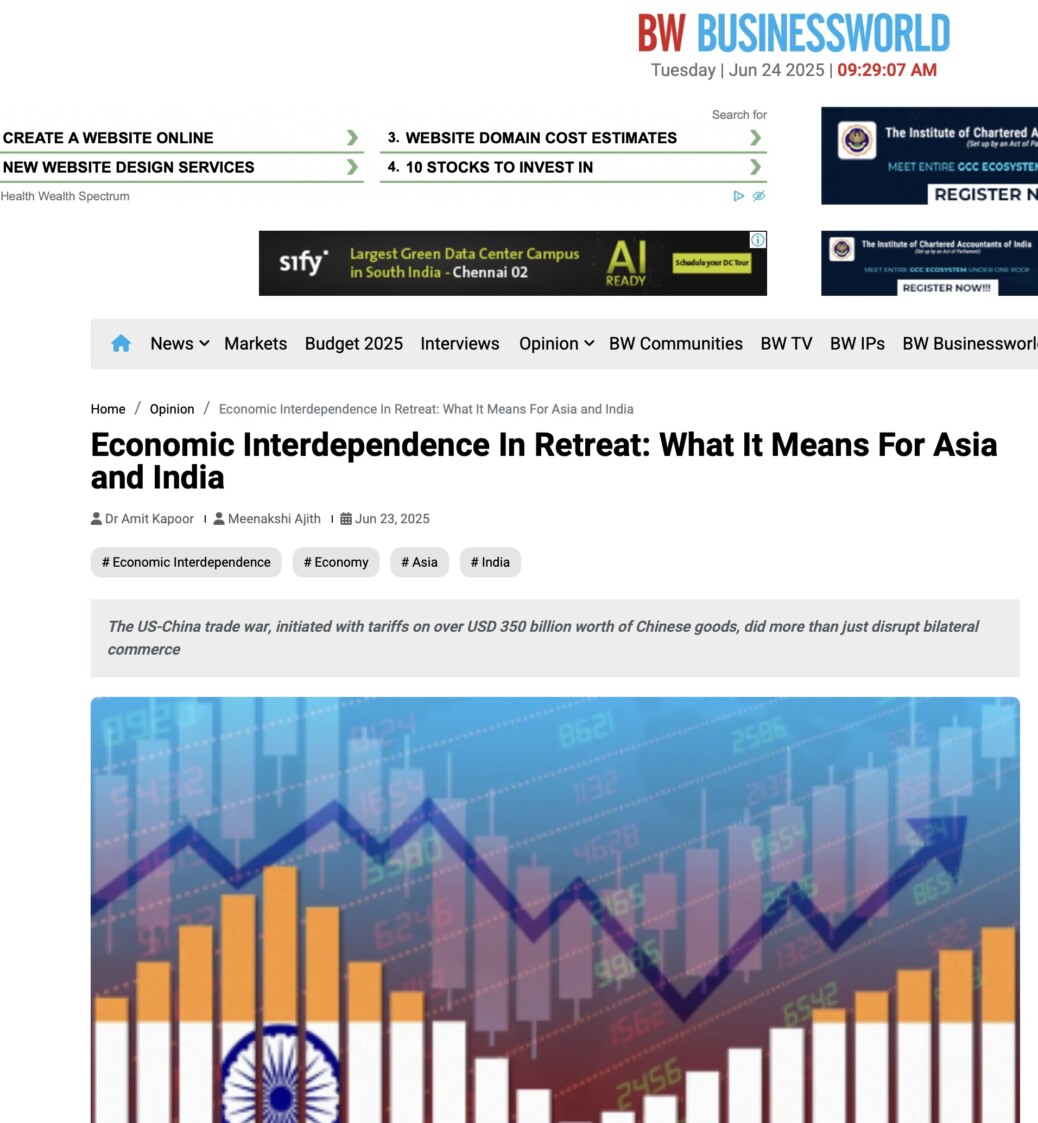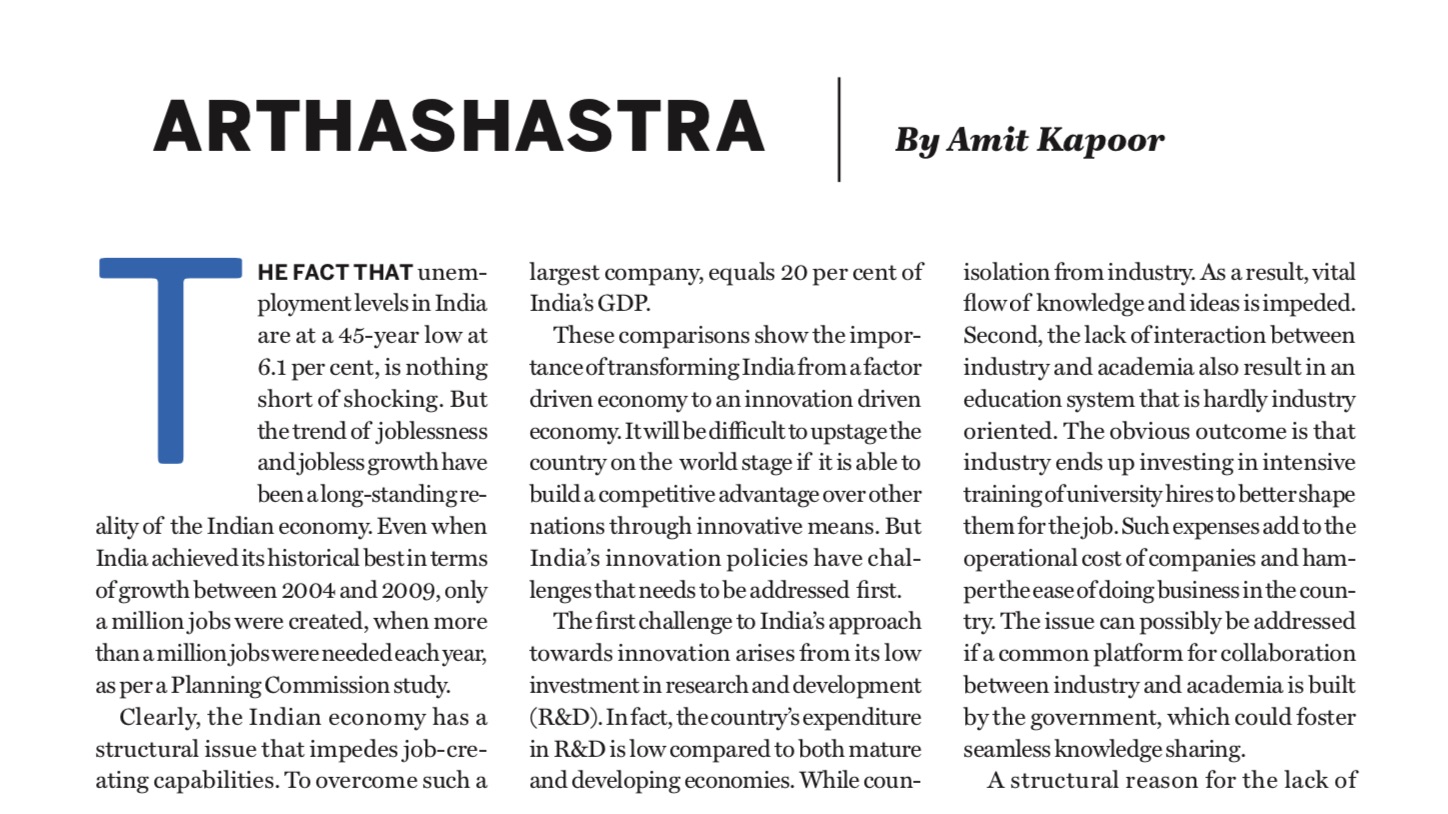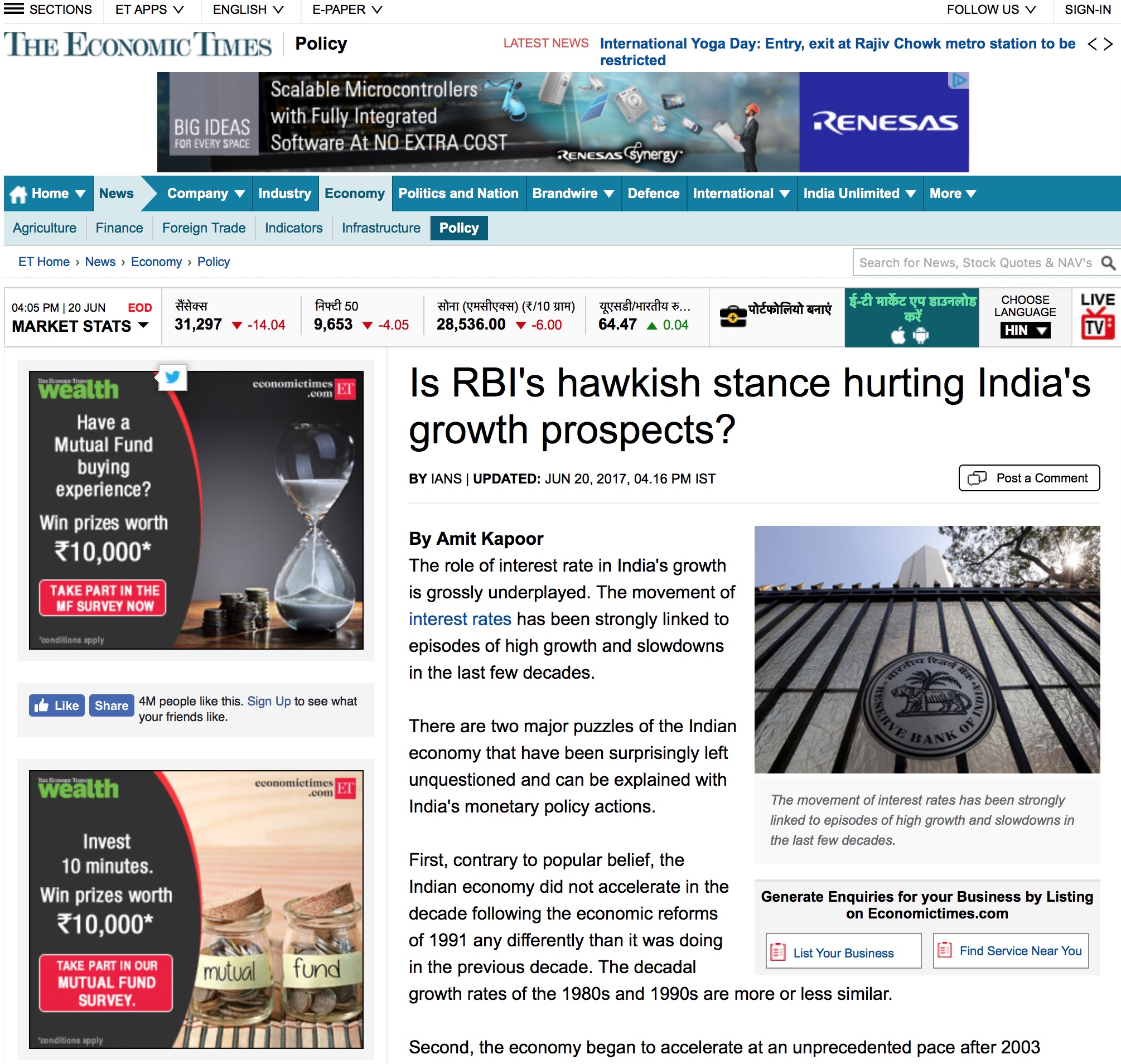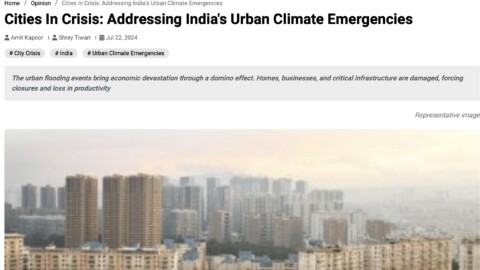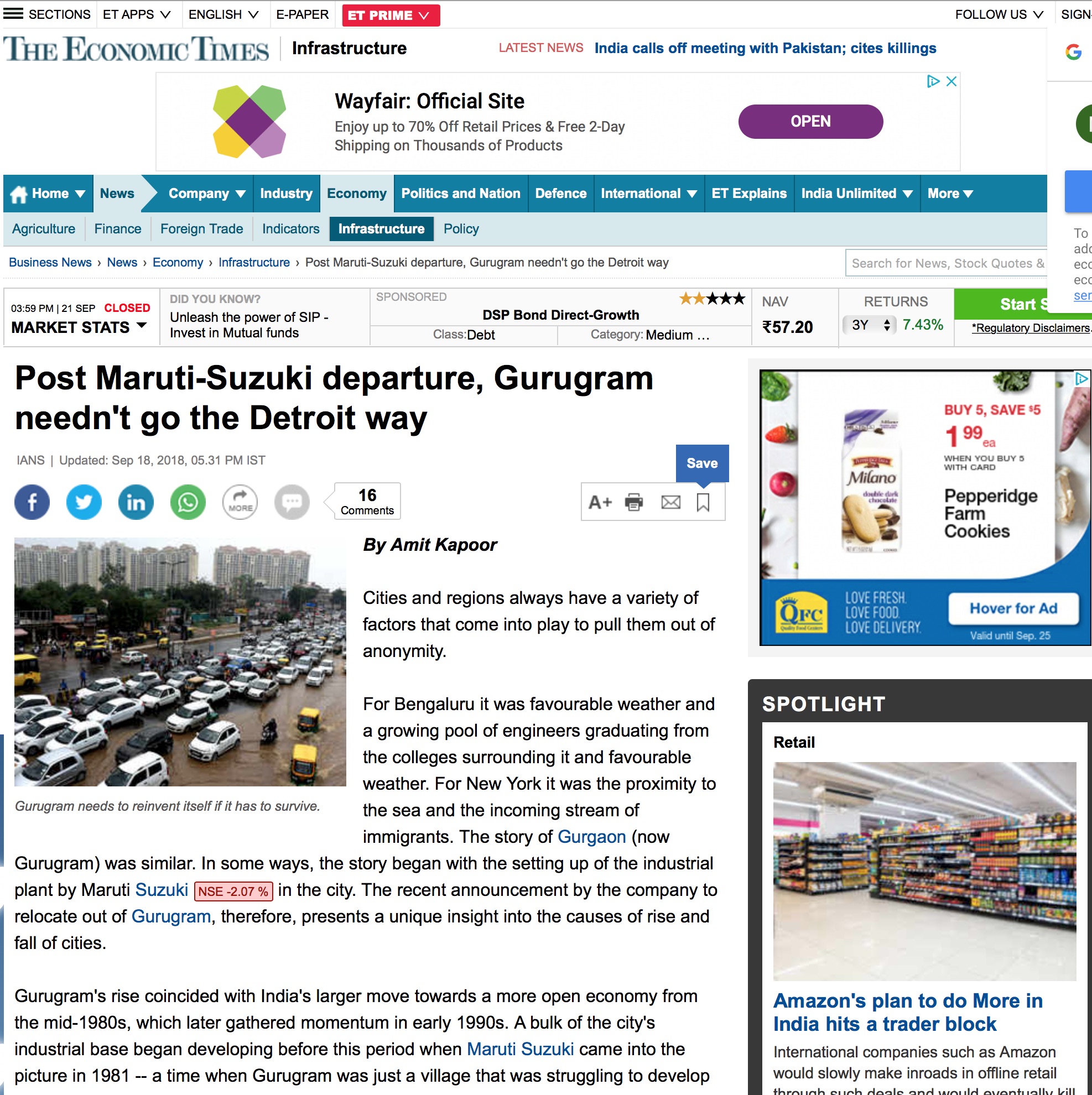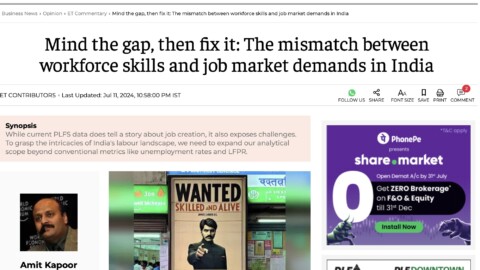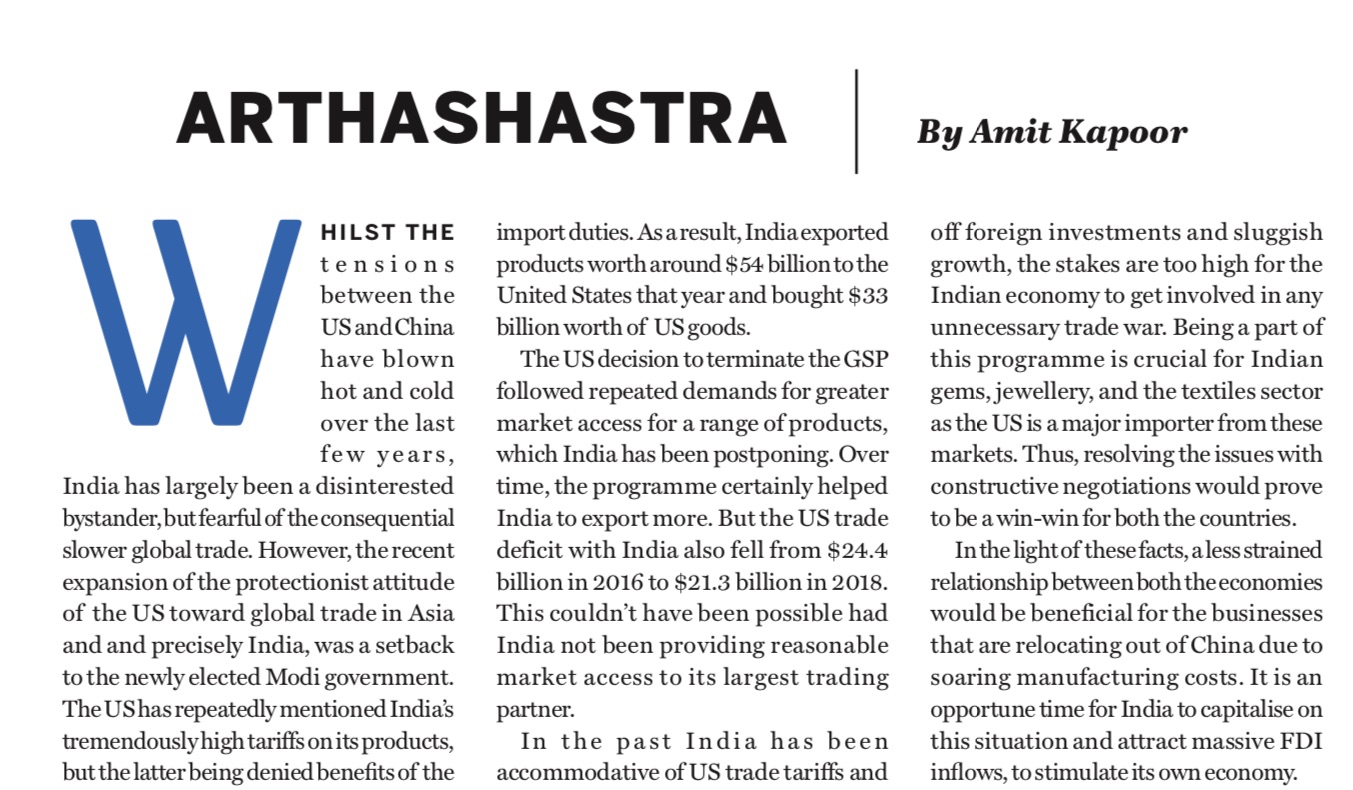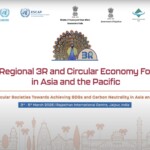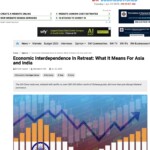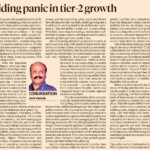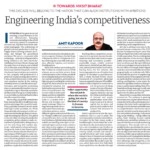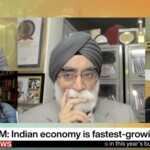By Amit Kapoor Meenakshi Ajith
For decades, globalization drove Asia’s meteoric rise, transforming it into the manufacturing engine of the world. The proliferation of supply chains, the entry of China into WTO in 2001 and the search for efficiency created an ecosystem of economic interdependence that underpinned both prosperity and stability across the region. In the 1980’s the share in world GDP based on purchasing power parity for emerging markets and developing economies particularly in the East stood at only 37% whereas advanced economies had a 63% share. Somewhere around 2007-08, the two blocks had equal share in the world GDP. After this point, the EMDEs bloc surpassed advanced economies, reaching a level of about 58 percent in 2023. This high was driven by the rise of eastern economies and is under strain today due to a confluence of geopolitical tensions, protectionist policies, and national security concerns. Even though USA and China are in the headlines of this spat; it has set in motion a gradual yet profound shift away from tightly integrated global markets The defining rupture indeed came under the Trump presidency, by upending decades of trade orthodoxy. The US–China trade war, initiated with tariffs on over $350 billion worth of Chinese goods, did more than just disrupt bilateral commerce. It exposed the fragility of global supply chains and underscored the political risks embedded in economic interdependence.
The ripple effects of this shift are particularly stark in Asia. Long accustomed to export-led growth, economies such as South Korea, Vietnam, and Malaysia now face an increasingly fragmented trading system. Nowhere is this more visible than in the technology and semiconductor sectors. The US banned advanced chip exports to China and pushed allies like the Netherlands and Japan to restrict the sale of crucial equipment. This disrupted the finely tuned supply networks that previously spanned East Asia, raising costs and uncertainty into investment decisions. China in response curbed exports of critical minerals to the U.S., using its control over rare earths as leverage in the trade conflict. It suspended shipments, citing regulatory changes, and framed U.S. restrictions as bullying while deepening ties with European tech firms.
This unravelling has altered the geopolitical landscape as well in Asia. The recently concluded Shangri-La Dialogue underscored the differing Western approaches to Asia, while South Korea’s potential shift under Lee Jae-myung signals a move toward strategic autonomy by balancing ties with the U.S., easing economic ties with China, and re-engaging North Korea. Together, these developments reflect a growing uncertainty across Asia, where traditional alignments are fraying and countries like India must respond with greater flexibility and resilience.
For India, this presents both a challenge and an opportunity. On one hand, the fracturing of global trade could constrain the broader Asian growth engine that has historically pulled India along in its slipstream. On the other, India is being courted by Western democracies as a crucial node in a more diversified, secure, and politically palatable supply chain model. India’s trade strategy increasingly reflects this new calculus. The shift is not toward wholesale decoupling from China which would be an unrealistic and economically costly goal but toward a deliberate de-risking of exposure.
Semiconductors offer a telling case study. India’s semiconductor imports surged by 18.5% in FY24 and domestic demand expected to touch $100 billion by 2030. In response, New Delhi has launched a $10 billion incentive program to attract semiconductor manufacturing, drawing commitments from companies like Micron and Tower Semiconductor. While India remains a fledgling player in the chip ecosystem, its geopolitical alignment and large market make it a candidate for long-term investment particularly as firms look to hedge against overreliance on China or Taiwan. Another crucial sector is electric vehicles (EVs). Global EV supply chains are heavily China-centric, from battery minerals to final assembly. India, aiming to capture some of this value, has introduced a phased manufacturing roadmap for batteries and EV components, and is partnering with countries like Australia for lithium supply. This push aligns with the broader Western interest in friend-shoring production away from authoritarian states toward strategic partners like India.
Yet India’s opportunity is not automatic. To become a credible alternative in global value chains, it must address structural bottlenecks, logistics inefficiencies, regulatory unpredictability, and a still-nascent innovation ecosystem. Moreover, while its large workforce is a comparative advantage, skilling gaps remain a major constraint. As revealed in the 2025 economic survey, 65.3% of the workforce aged 15–59 has received no vocational or technical training at all, severely limiting job-readiness in skilled sectors. From a macro perspective, India’s exports remain heavily reliant on low value-added segments such as petroleum products, gems and jewellery, and textiles. To truly benefit from the economic reordering in Asia, India must focus on its competitiveness. This means moving beyond relying solely on cost advantages like low wages or subsidies, and instead focusing on building a foundation of innovation, cultivating a skilled workforce, and strengthening institutions that promote efficiency and excellence. For India, this involves addressing gaps in skills development, modernizing infrastructure to meet global standards, and creating a business environment that encourages investment, entrepreneurship, and value creation. As global supply chains are being reconfigured, India’s goal should be to emerge not just as an alternative destination, but as a preferred hub recognized for quality, innovation, and sustainable growth.
The article was published with Business World on June 23, 2025.
